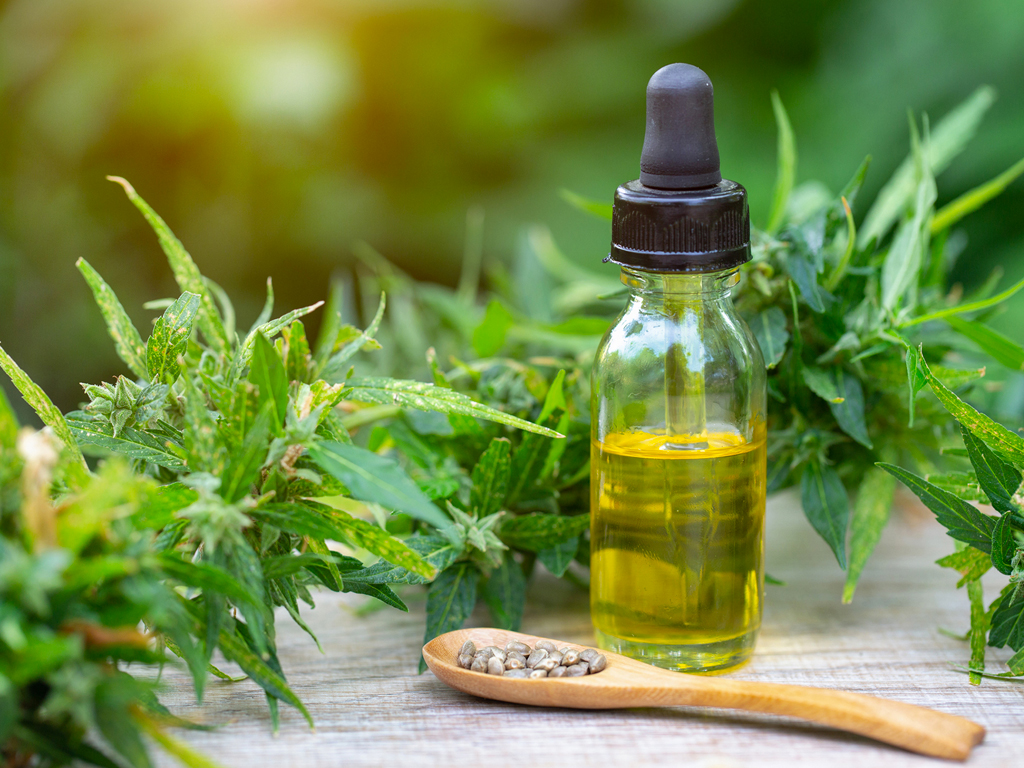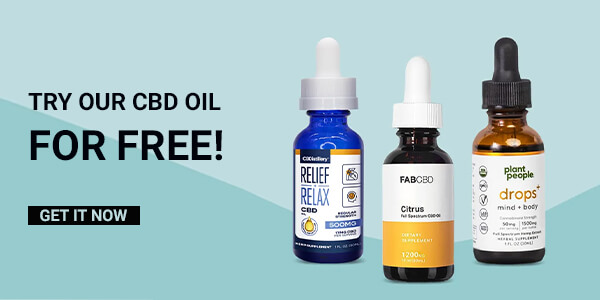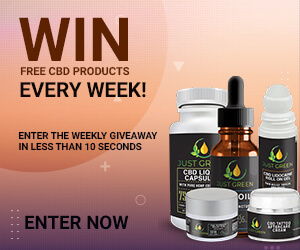Do you have questions on how the endocannabinoid system relates to CBD and THC? Read this article to understand the impact of CBD oil and marijuana.
CBD and THC are two of the many different cannabinoids in the cannabis plant. Both interact with the endocannabinoid system in the body to help treat or limit the effects of various conditions. However, the reactions and effects are different.
Following the legalization of hemp and other cannabis products, cannabis lovers are becoming more curious about their options. The options include cannabidiol (CBD) and delta-9 tetrahydrocannabinol (THC). THC is mainly associated with and extracted from marijuana; hence it’s also called marijuana. CBD and THC are the most abundant natural compounds found in the plants of cannabis species. Both compounds interact with your body’s Endocannabinoid System (ECS) but have varying effects. The significant difference between CBD and THC is the lack of euphoric effects for CBD. This read explains more about these compounds and their interaction with the ECS.
Firstly, it’s critical to know that when we talk about CBD oil, marijuana, and THC, we refer to the cannabis plant and its derivatives. While there are essential legal differences between hemp and marijuana, scientifically, hemp and marijuana are two versions of the cannabis plant. Hemp and marijuana produce CBD and THC. Consequently, marijuana has a higher concentration of THC, while hemp has a higher concentration of CBD. At the federal level, under the 2018 Farm Bill in the United States, cannabis plants with 0.3% or fewer THC levels are considered hemp and are legal for sale, while plants with more than 0.3% THC levels are marijuana. Although this might be quite confusing, it’s essential to know that cannabis applies to hemp and marijuana.
The THC compound is the main psychoactive compound in cannabis that gives you a high sensational feeling. Bloomfield& Ashok (2016) showed that THC activates the brain’s reward system by releasing dopamine. According to Sayin (2019), dopamine is the neurotransmitter that plays an important role in mood and pleasure. THC causes people to experience high feelings by triggering a higher than normal dopamine release. THC is mainly administered by smoking marijuana, but it can also be found as an ingredient in edibles, oils, and capsules.
CBD is the second most abundant chemical compound in cannabis after THC. Williams & Nutbrown (2021) stated that CBD has recently become more popular due to its therapeutic effects in treating various ailments. However, hemp-derived CBD contains only minute THC levels of less than 0.3%, while marijuana-derived CBD may contain more than 0.3% THC levels. Consequently, note that CBD is mainly derived from hemp to avoid THC. Therefore, CBD derived from marijuana may not be ideal for consumers who avoid THC. Unfortunately, some CBD products produced from cannabis may contain more THC than the label indicates. That’s because CBD is currently under no regulation by the Food and Drug Administration. So you’re advised to exercise precaution when buying CBD products. Also, you can ask for third-party lab test results from the manufacturer, which verifies the THC content of your CBD product. A CBD product with no third-party lab test results isn’t likely to be genuine.
A cannabinoid is a collective term that describes a group of similar compounds found in the body called endocannabinoids. They are naturally found in phytocannabinoids plants and made in labs as synthetic cannabinoids. These cannabinoids (THC and CBD) interact with the ECS, often described as a major regulatory system. Battista & Di Tommaso’s (2012) stated that ECS plays an important role in maintaining homeostasis. Although researchers are still working on understanding this complex system, some evidence shows that it’s associated with processes such as memory, appetite, mood, sleep, and fertility.
THC and CBD have a similar chemical structure to the body’s natural endocannabinoids. Endocannabinoids are neurotransmitters that act in the brain. Neurotransmitters are chemical messengers that communicate signals between nerve cells in the body. They play a critical role in various body functions such as sleep, appetite, pain, mood, and the immune system.
While CBD and THC have the same molecular structure, there are differences in how these molecules are arranged. They bind with receptors and cause different effects in the body by imitating endocannabinoids. THC directly binds to CB1 receptors in the body, mainly found in the brain and nervous system. Pertwee (2008) showed that CB1 receptor activation is responsible for the high from smoking cannabis and that CBD doesn’t directly bind with that receptor. Rather, CBD interacts with CB2 receptors mainly found in the peripheral system, explaining many of its therapeutic benefits.
THC and CBD are sister molecules, especially when it comes to an interesting aspect of cannabinoid science known as the entourage effect. Blasco-Benito (2018) described the entourage effect as the phenomenon by which cannabinoids are more effective together than alone in isolated preparations. As a result, when shopping for cannabis products, experts recommend full-spectrum products, which comprise other cannabinoids and terpenes of the plant. Terpenes are responsible for the distinctive aroma of the cannabis plant and some wellness benefits.
Adverse Effects
CBD rarely shows any noticeable side effects, even when taken in large doses. Iffland & Grotenhermen (2017) showed that CBD was tolerated in patients with no signs of toxicity or serious adverse effects. If side effects were detected, it’s because of a reaction between CBD and another drug being taken. On the contrary, THC has well-known negative effects, especially when taken in large doses. The negative effects include dry mouth, increased heart rate, red eyes, coordination problems, and memory loss. THC’s negative effects are associated with the compound’s psychoactive properties.
Conclusion
THC and CBD are extracted from the same cannabis plant, and the two have distinctive properties that separate them from each other. While THC is associated with the high feeling or intoxicating effects, CBD is better known for its health benefits. Before using any product with cannabinoids, you’re advised to consult with your doctor and consider how the CBD products may interact with other medications. Also, THC and CBD have shown possible benefits for alleviating symptoms and treating various ailments. However, cannabis research is still limited, and further research is needed to prove the claims.
References
Abernethy, A. (2019). Hemp Production & 2018 Farm Bill. US Food and Drug Administration.
Battista, N., Di Tommaso, M., Bari, M., & Maccarrone, M. (2012). The endocannabinoid system: an overview. Frontiers in behavioral neuroscience, 6, 9.
Blasco-Benito, S., Seijo-Vila, M., Caro-Villalobos, M., Tundidor, I., Andradas, C., García-Taboada, E., … & Sánchez, C. (2018). Appraising the “entourage effect”: Antitumor action of a pure cannabinoid versus a botanical drug preparation in preclinical models of breast cancer. Biochemical Pharmacology, 157, 285-293.
Bloomfield, M. A., Ashok, A. H., Volkow, N. D., & Howes, O. D. (2016). The effects of Δ9-tetrahydrocannabinol on the dopamine system. Nature, 539(7629), 369-377.
Iffland, K., & Grotenhermen, F. (2017). An update on safety and side effects of cannabidiol: a review of clinical data and relevant animal studies. Cannabis and cannabinoid research, 2(1), 139-154.
Pertwee, R. (2008). The diverse CB1 and CB2 receptor pharmacology of three plant cannabinoids: Δ9‐tetrahydrocannabinol, cannabidiol, and Δ9‐tetrahydrocannabivarin. British journal of pharmacology, 153(2), 199-215.
Williams, C., & Nutbrown, D. L. (2021). A Review of Research into the Health Benefits of Cannabidiol (CBD). The Neighborhood Academy: Pittsburgh, PA, USA.
Sayin, H. U. (2019). Getting high on dopamine: Neuro scientific aspects of pleasure. SexuS J, 4, 883-906.
I presently work as a GP in London. Using the acquired academic and professional experience, I advise patients with various complaints about mental health – depressed mood, nervousness, lack of energy and interest, sleep disorders, panic attacks, obsessive thoughts and anxieties, difficulty concentrating, and stress. In my free time, I love to paint and go on long walks on the beach. One of my latest obsessions is sudoku – a wonderful activity to calm an unease mind.
[email protected]
- DELTA 8 TINCTURES By Deltamunchies-The Ultimate Guide to Delta-8 THC Tinctures Comprehensive Review - October 10, 2023
- What Should I Look Out For When Purchasing CBD Gummies? - March 2, 2023
- Travelling with CBD: can you take CBD oil on a plane? - October 25, 2022








